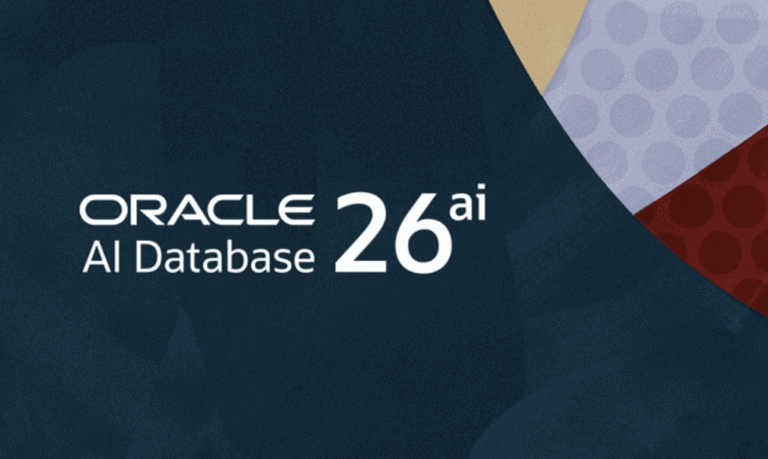Oracle wants customers to be able to bring AI to all their data in a secure way. “AI for Data,” as the company summarizes the vision behind Oracle AI Database 26ai, is all about making it easy to use and learn AI workflows. What exactly does it mean to make a database “AI-native”?
Oracle AI Database 26ai replaces Database 23ai. That earlier version removed the “c” after the number, which stood for cloud. Now, AI has been added to the terminology once again, just like the event in Las Vegas that was renamed from CloudWorld to AI World. It immediately makes clear where the emphasis lies with this latest version of Oracle’s database.
According to Oracle itself, 23ai was the foundation for the new capabilities of 26ai. The new version “consolidates and elevates [23ai] to a cohesive, AI-native platform for production workloads at scale.”
All in one
The core of Database 26ai revolves around combining different data types in a single query. While the previous generation already introduced vector search, 26ai goes further. Searching PDFs, videos, images, and tables in a single query is made possible by blending vectors with relational, text, JSON, graph, and spatial data. This can be combined with LLMs and the Model Context Protocol for maximum flexibility.
Agents take on a leading role as “first-class citizens.” In concrete terms, this means that agents can be defined, run, and managed within Oracle’s Autonomous AI Database. This can be as simple as using the Private Agent Factory in a no-code manner. In other words, in-depth technical knowledge is no longer required to roll out AI agents on Oracle data.
Autonomous AI Lakehouse
The new Autonomous AI Lakehouse transforms existing warehouses or data lakes into an open, multi-vendor AI lakehouse. This is made possible by support for Apache Iceberg data formats in object storage.
The lakehouse runs on different clouds: OCI, AWS, Azure, and Google Cloud. Interoperability with Databricks, Snowflake, and other Iceberg-compatible stores enables data sharing without having to move it.
From small to large
Oracle clearly does not intend for AI to remain exclusive to larger organizations. The “intelligent storage” driven by Oracle Exadata should be ideal for both high-end workloads and smaller deployments, such as AI projects in a pilot phase. Latency remains low thanks to a so-called True Cache.
The combination of Data Privacy Protection and Oracle Database Zero Data Loss Cloud Protect should keep data secure, regardless of whether it is in the cloud or on-premises. In the cloud, AI Database 26ai will first launch via the Autonomous Database, Exadata Database Service, Base Database Service, on Azure, GCP or AWS, and within Oracle Database on OCI Compute VMs. On-premises variants are available on Exadata Cloud@Customer, Compute Cloud@Customer, Exadata Database Machine, Database Appliance, and Private Cloud Appliance.
